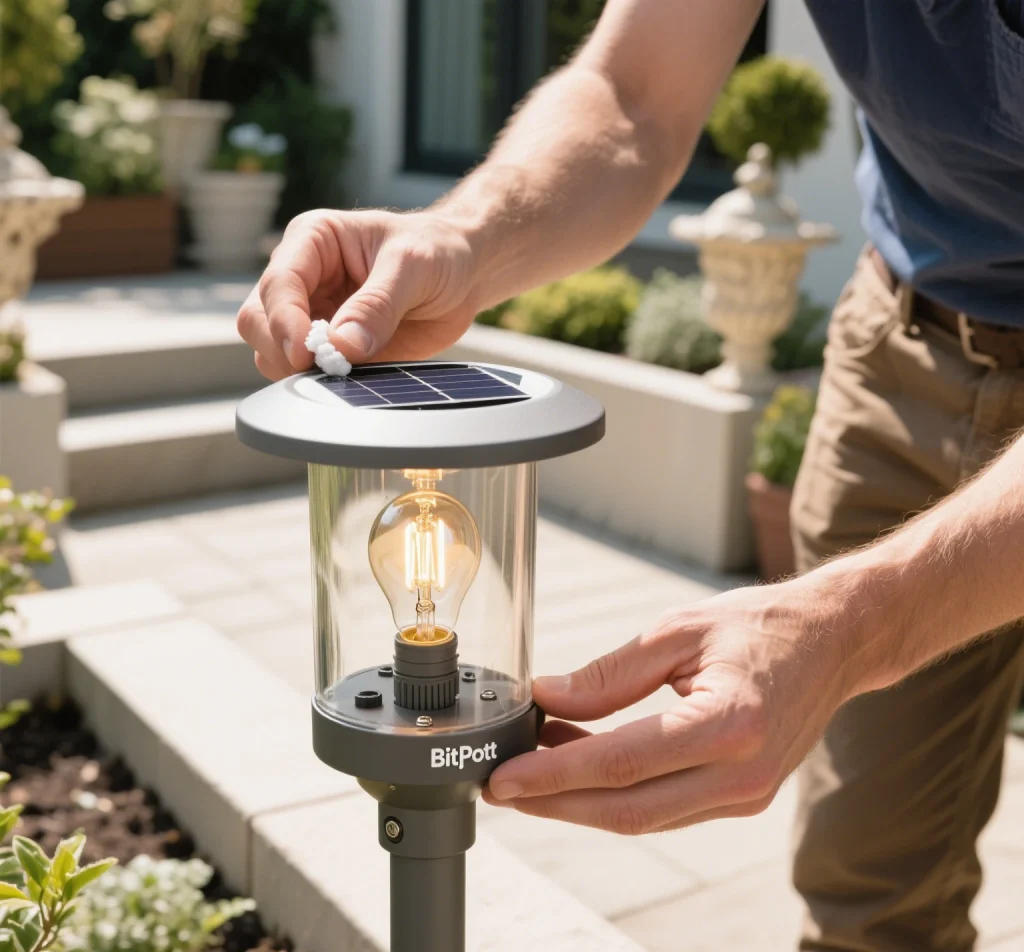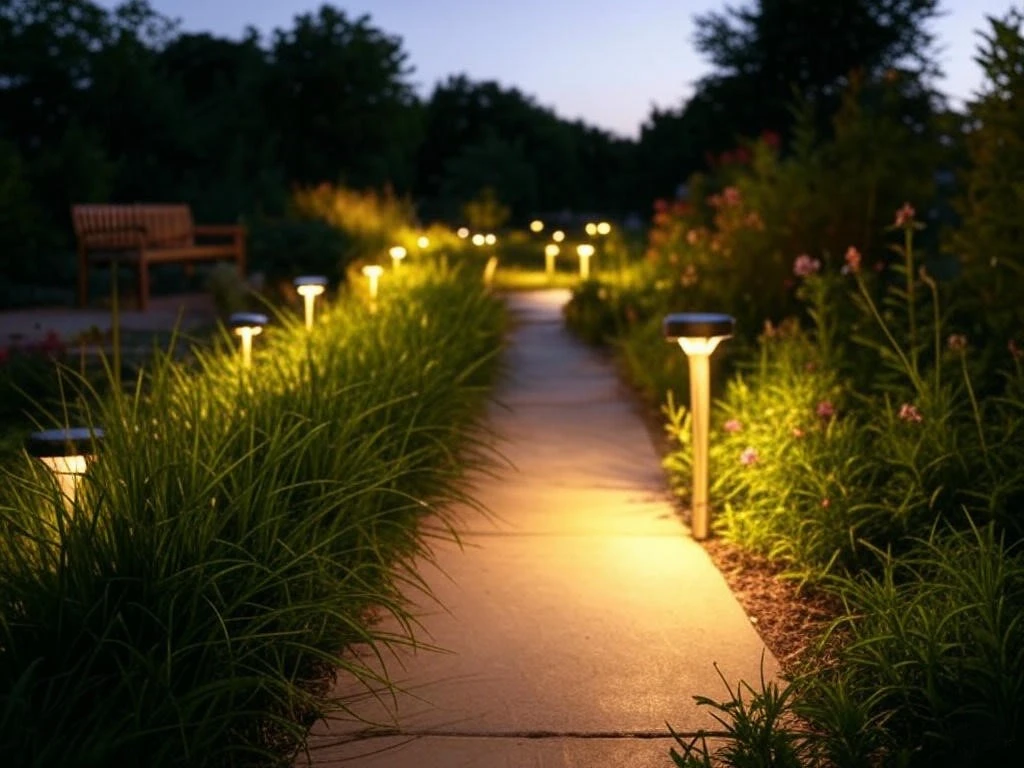As a leader in eco-friendly lighting solutions, bitpott solar street lights illuminate pathways for pedestrians by intelligently responding to environmental changes, such as automatically turning on at dusk and off at dawn. This seamless operation is enabled by sophisticated controllers that manage light and time settings. This article explores the principles behind light control and time control in solar street lights, explains how to adjust timing settings, and provides practical insights to optimize their performance, ensuring energy efficiency and reliability.

Understanding Solar Street Light Controllers
The heart of a solar street light’s operation lies in its controller, which governs when the light turns on or off. Most controllers are preset at the factory based on customer specifications, ensuring the lights operate according to desired schedules. Typically, controllers are housed inside the lamp door, though modern designs, such as bitpott’s lithium battery-integrated systems, often place them at the base of the solar panel for easier access. Controllers offer two primary adjustment methods: manual tuning via external buttons or remote control. Remote-controlled models, which dominate the market, require a dedicated remote to modify settings, making it essential to understand the controller type before attempting adjustments.
Mechanisms of Light and Time Control
Solar street lights rely on two key mechanisms to manage illumination: light control and time control. These features ensure the lights operate efficiently while conserving energy.
1. Light Control Functionality
Light control enables solar street lights to respond to ambient light levels. A built-in photosensor detects when daylight fades, triggering the light to turn on automatically. Conversely, when morning light increases, the sensor signals the light to turn off. This process is powered by a microprocessor and specialized algorithms that ensure precise, intelligent operation. The light control system minimizes energy waste by activating the light only when needed, making it ideal for energy-efficient lighting in various environments.
2. Time Control Functionality
Time control allows users to set specific operating hours for the lights. Using precise crystal oscillator technology, controllers maintain accurate timing, enabling lights to follow a predetermined schedule. For instance, a light can be programmed to turn on at 6:00 PM and off at 5:00 AM. Time control is particularly useful in regions with consistent day-night cycles, ensuring reliable performance without manual intervention. Adjustments to these settings are typically made via a remote control, which communicates with the controller to update the schedule.

Advanced Features of Modern Controllers
Modern solar street light controllers incorporate advanced technologies to enhance performance and durability:
- Efficient Charging Circuits: Controllers use dual MOS series control loops, reducing voltage loss by nearly half compared to traditional diode-based systems. Pulse Width Modulation (PWM) further optimizes energy consumption, extending battery life.
- Smart Battery Management: Controllers monitor battery health, employing strategies like direct charging and float charging to prevent over-discharge. High-precision temperature compensation ensures accurate charging in varying climates, enhancing battery longevity.
- Robust Design: Built with industrial-grade chips and sealed components, controllers operate reliably in extreme conditions, including cold, hot, or humid environments, ensuring consistent performance year-round.
How to Adjust Timing Settings
Adjusting the timing of solar street lights depends on the controller type and requires careful attention to ensure optimal performance. Here’s a step-by-step guide:
- Identify the Controller Type: Check whether the controller supports manual or remote adjustments. Remote-controlled models are more common and require a compatible remote.
- Access the Remote: For remote-controlled systems, ensure the remote is functional and has sufficient battery power. Stand within the recommended range (typically 5-10 meters) to send signals.
- Modify Light Control Settings: To adjust the light sensitivity (e.g., to turn on earlier or later), use the remote to set the light control voltage threshold. A higher threshold causes the light to activate in brighter conditions, while a lower threshold delays activation.
- Set Time Control Parameters: Program the desired on/off times using the remote. For example, to extend illumination until 6:00 AM, input the new schedule, ensuring the controller’s clock is synchronized with local time.
- Test and Verify: After adjustments, test the light by simulating dusk (e.g., covering the photosensor) or waiting until evening to confirm the new settings work as intended. If the light does not respond, recheck the remote’s signal or consult the manufacturer.
Practical Tips for Optimization
To maximize the efficiency of solar street lights, consider the following:
- Regular Maintenance: Inspect the controller and photosensor periodically to ensure they are free from dust or debris, which can affect light detection.
- Environmental Adaptation: In areas with irregular daylight patterns, adjust light control settings seasonally to maintain consistent performance.
- Battery Health: Monitor battery status via the controller’s indicators to prevent over-discharge, especially during extended cloudy periods.
Conclusion
By leveraging advanced light and time control technologies, bitpott solar street lights deliver reliable, energy-efficient illumination for communities worldwide. Understanding how to adjust controller settings and maintain system components empowers users to optimize performance and extend equipment lifespan. As solar technology continues to evolve, these systems will play a pivotal role in sustainable urban and rural development, lighting the way toward a greener future.

Comments